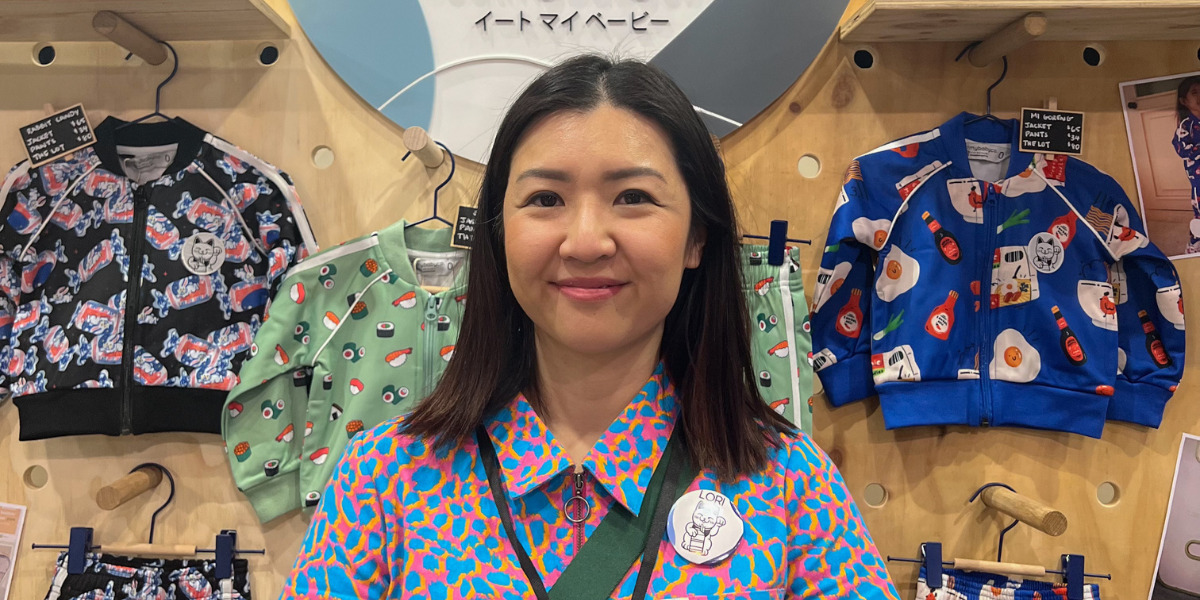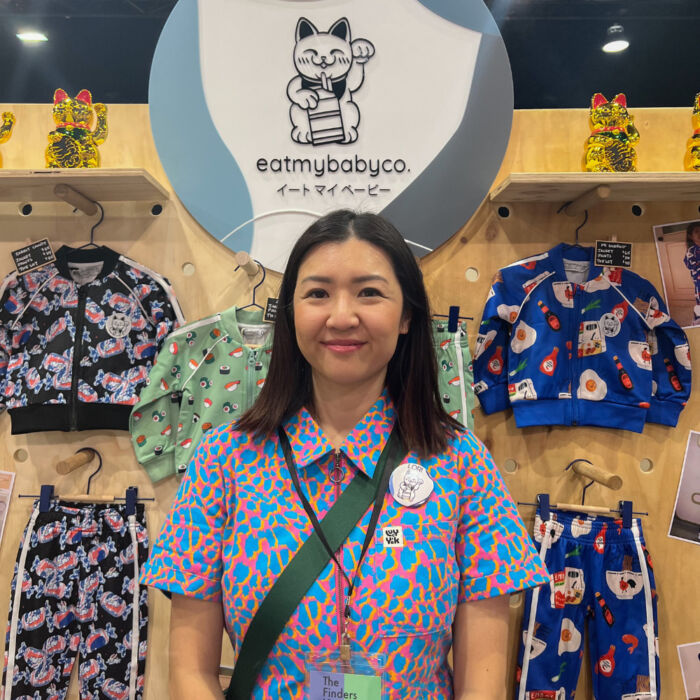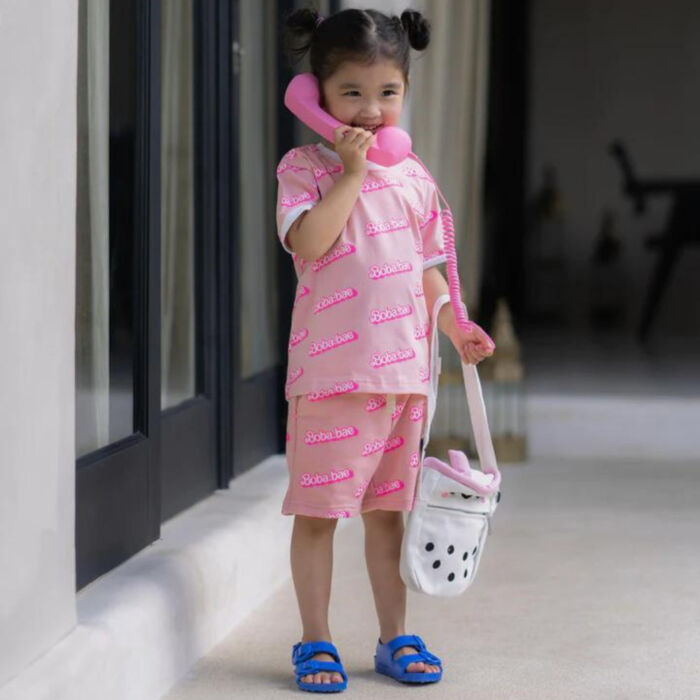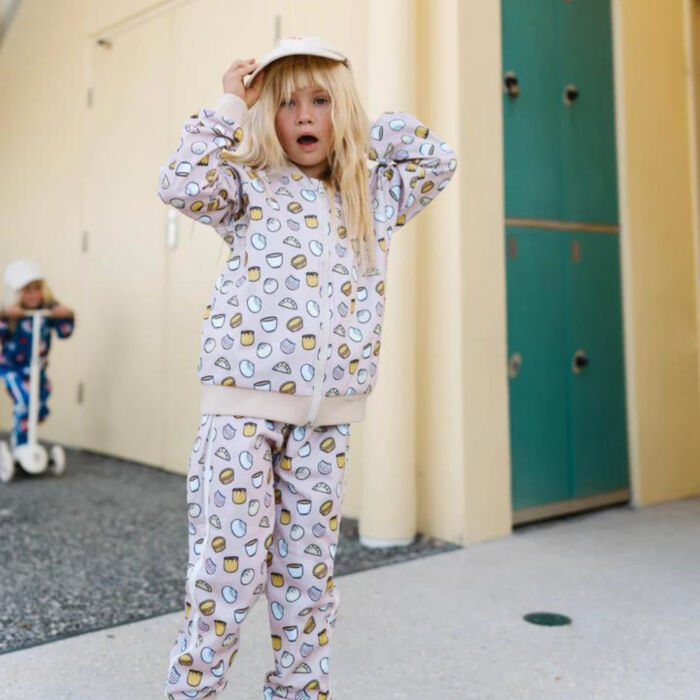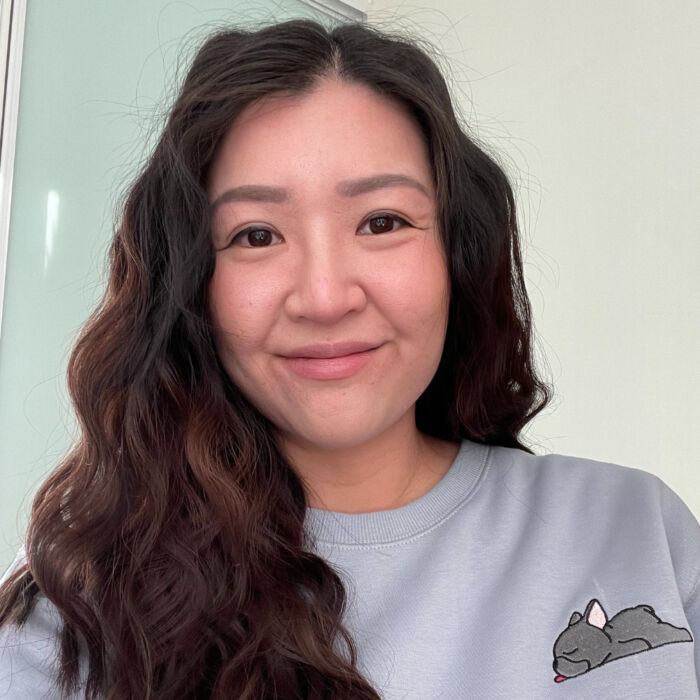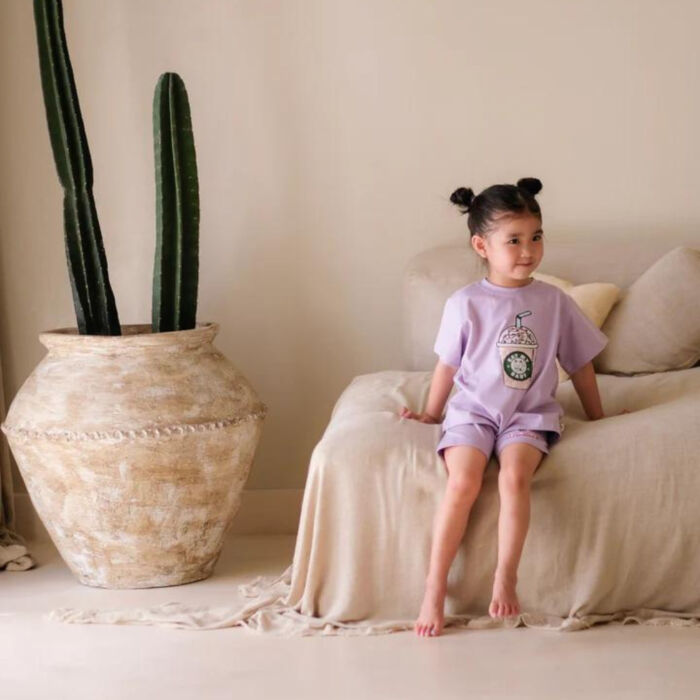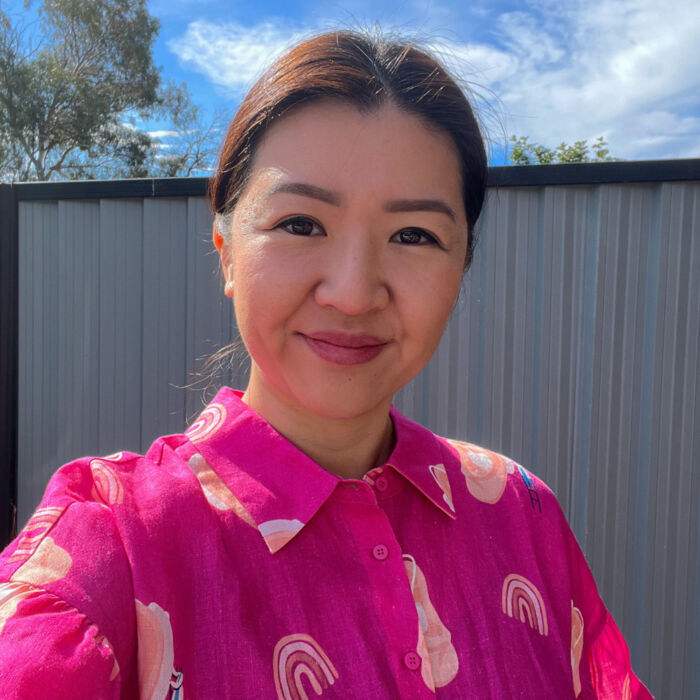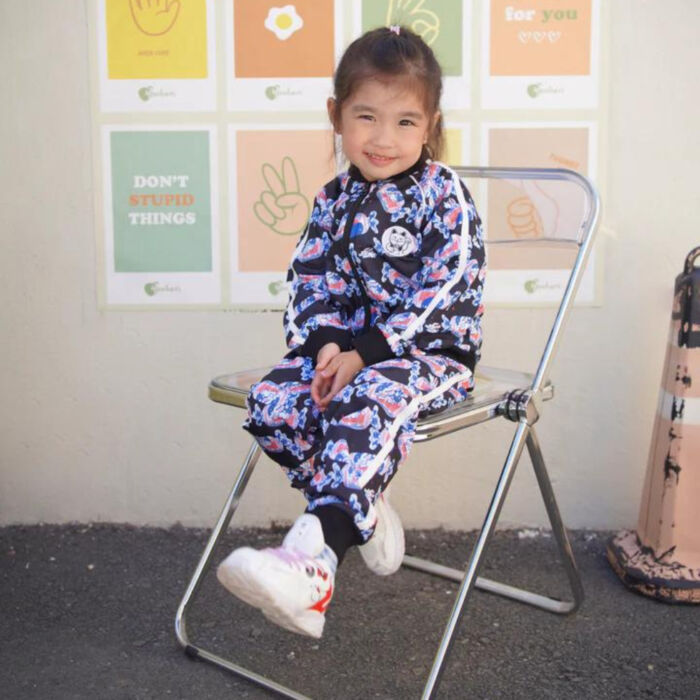Eat My Baby Co. is a jolting name for a kid’s apparel brand.
Not if you’re a mom, Lorianne Trinh says.
“When you’re a mother, you have this temptation to just eat your baby,” Trinh says. “Every time I look at my daughter and my newborn now, I just want to nibble; I want to kiss her. I just want to essentially eat her. That’s just how the name came to me.”
Eat My Baby Co. makes playful children’s tracksuits and apparel with Asian-inspired snack designs. Trinh started the business in 2020 while on maternity leave from her day job as a part-time audiologist.
“I do love my job, but I’ve also always wanted to start something on the side, a bit of a side hustle, just to earn a little bit of extra cash,” Trinh says. “But [more importantly] the whole concept is quite special to me.”
The brand offers more than just fun designs for kids. For Trinh, it’s a statement and celebration of cultural heritage that she hopes to grow with Eat My Baby Co.
That celebration started with a craving.
Tasty Designs
The Trinhs are a second-generation migrant family based in Sydney, Australia, with Chinese, Indonesian, and Vietnamese roots. When Trinh was shopping for a tracksuit for her firstborn, she noticed trendy designs featuring foods like avocados and the Australian delicacy Vegemite.
“I just didn’t feel that it was relevant to our family as an Asian-Australian, second-generation migrant family,” Trinh says.
Then she found one with sushi designs and immediately bought it.
“I got really excited,” Trinh says. “I just said, ‘Take my money. I’m going to buy this.’”
When she returned to the site a few weeks later, the sushi designs were already sold out.
“So I knew that a lot of families out there were feeling the same as me,” Trinh says. “They were feeling this sort of nostalgia with sushi, Asian snacks, and all of that.”
The idea clicked overnight. Trinh would create tracksuits with designs inspired by Asian snacks that expats and migrant families crave from their homeland or that are inherited from generation to generation.
“The designs that I chose are snacks that I’ve eaten in my childhood, and it instills this kind of feeling of ‘90s nostalgia [for] the way I grew up,” Trinh says.
Even though she’d never started a business before, she knew that being fluent in Vietnamese would give her an advantage when she started researching manufacturers.
She began by connecting with Chris Walker, a Vietnam sourcing expert Trinh discovered on YouTube. After an exploratory phone call, Walker suggested that Trinh spend more time on her marketing plan before beginning the manufacturing process. That’s when she discovered Foundr’s Start & Scale free training course taught by Gretta van Riel.
“I was pretty much hooked,” Trinh says. “It answered a lot of questions for me, and I started the [full] course from there.”
“It answered a lot of questions for me, and I started the [full] course from there.”
The course inspired Trinh to clarify the why of her business. She thought a lot about her target customer, a parent like her who was seeking to express their heritage through apparel.
“Even though you’re in a minority group in Australia, you want to embrace your heritage, embrace your cultural roots,” Trinh says. “You can’t really do that with soft colors. I want it to be really out there, really outgoing, really outrageous.”
The business name was an outrageous start, and the designs followed suit.
“Our brand’s ethos is be yourself, be unique,” Trinh says. “That was something that was really personal to me.”
“Our brand’s ethos is be yourself, be unique.”
The initial Eat My Baby Co. designs focused on striking and recognizable snacks like sushi, boba tea, and sakura milk. The graphics feel hand-drawn with bright, primary colors. It’s exactly what Trinh was envisioning and hoped others would too.
Now, she just needed to bring the designs to life.
Know Your Fabrics
With her brand and marketing polished, Trinh returned to the question of manufacturing. After investigating the cost and opportunity to produce the tracksuits, it became clear that Vietnam would be the best place to produce them.
But even for someone who knows the language, Trinh says early-stage founders need to prepare before starting conversations with manufacturers.
“You have to know exactly what design you’re after and what fabrics that you want,” Trinh says. “Every manufacturing company is a bit different.”
“You have to know exactly what design you’re after and what fabrics that you want.”
Trinh bought swatches from stores in Sydney to get more familiar with the types of fabrics on offer so she could feel the differences in weight, texture, and material. Her advice to fellow founders is simple: Know your fabrics.
Trinh’s preparation paid off because she learned, especially in the middle of the Covid-19 pandemic, that delays are commonplace for apparel manufacturing.
“Anticipate delays and then anticipate more delays on top of that,” Trinh says. “Especially with manufacturing overseas.”
Her first shipment of products came just in time for her launch in the winter of 2020, and thankfully, the quality lived up to her expectations.
The products were ready. The brand was ready. But was there an audience for Eat My Baby Co.?
Find Your Customers
Trinh describes herself as an introvert. So uploading her first Instagram video, in which she talked to camera about Eat My Baby Co., was a nerve-wracking experience.
“To have your idea out there, it’s quite scary,” Trinh says. “Gretta instilled it in me that there’s […] always going to be a scare factor there. So just go ahead and just get your idea out there.”
While she patiently waited for her line of tracksuits to be made in Vietnam, Trinh started creating a community online. At first, she asked friends and family to follow the Instagram account and share it with their friends. Slowly, her account built momentum.
“Gretta instilled it in me that there’s […] always going to be a scare factor there. So just go ahead and just get your idea out there.”
However, as her target launch date approached, Trinh was worried she didn’t have enough followers and email subscribers to launch successfully. So she went on the Start & Scale Facebook group and read a story about a fellow entrepreneur with a hat brand.
“They had similar numbers to us. They had 300 followers and about a hundred email subscribers, and they launched quite successfully,” Trinh says. “So that gave me a bit of confidence when it came to launch day. I thought, ‘You know, it’s not a number that’s in the thousands, but perhaps it’s enough.’”
The day tracksuits were delivered to her front door, Trinh was overjoyed. She couldn’t wait for people to see them and decided to make her store live the next day. She immediately posted an unboxing video on her Instagram, and the response was overwhelming. On the first day, she made $4,500 in sales. Day Two generated $1,500.
At the end of its first month, Eat My Baby Co. had earned $25,000 in revenue.
Beyond the numbers, it’s the reaction from second-generation immigrant moms like her that surprised Trinh.
“They message me photos and tell me, ‘I love the tracksuits. Thank you so much for making these tracksuits,’” Trinh says. “I should be thanking the customer for purchasing our tracksuits, but instead, they’re thanking me for making the tracksuits. So I think that’s really special.”
Since its launch, Eat My Baby Co. has expanded its designs to feature snacks, including Rabbit Candy, Panda Snack, Mi Goreng, and Yum Cha.
“I should be thanking the customer for purchasing our tracksuits, but instead, they’re thanking me for making the tracksuits. So I think that’s really special.”
They’ve also added T-shirts and bags alongside the tracksuits. Trinh hopes to eventually create snack designs not only for East Asians but for migrant communities around the globe, merging nostalgic snacks with flashy designs they can wear with pride.
For now, she’s focused on keeping her product lines simple, with no more than five designs launched at a time. She’s savoring the moment and feels grateful that she took the risk to launch the brand.
“If you’ve got any fears, just push through those fears and just go for it,” Trinh says. “The worst thing to do would be just to sit there and wonder, ‘What if I had gone forward with that idea?’”
Thankfully, Trinh doesn’t have to ask that question.
—
Get the same course that helped Trinch launch her business.
